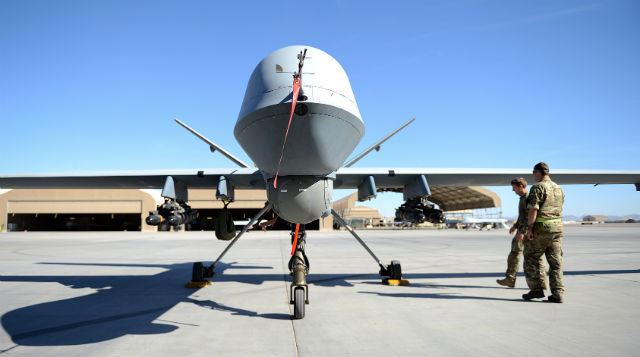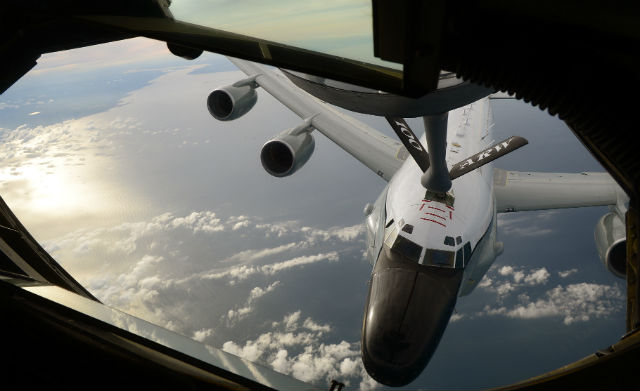Despite operating the largest fleet of General Atomics Aeronautical Systems MQ-9 Reaper unmanned air vehicles, the US Air Force is looking to smaller operators of the system to explore ways in which the logistical and cost burden of the type can be reduced.
Sequestration in the USA has meant the USAF has to be more innovative in the way it conducts international operations, and is utilising shared assets like the Reaper to save costs during overseas deployments, Lt Gen Robert Otto, deputy chief of staff for ISR, told the SMi ISR conference in London.
Otto notes that the spread of instability in both the Middle East and eastern Europe demonstrates that the USA and UK, for example, “have a shared interest” and operations will be aligned, so interoperability will be key.
He adds that the UK’s redeployment of the MQ-9 from Afghanistan to Iraq in 2014 was notably efficient, but supported by the USA: “The UK moved systems from Afghanistan to Iraq in a short number of days – much faster than we would have done in our bureaucracy in the United States.
“Some teaming was required… in the US we had some launch and recovery experts that the UK was short on at the time, so we were able to help launch that capability, which added to the overall coalition in Iraq.
“They stood up in September and became fully operationally capable in January, and I think that is a wonderful example of how we can team together.”

Crown Copyright
An MQ-9 user group to promote interoperability has been established that involves the USA, UK, France and Italy developing common tactics and procedures – meaning it would not matter which nation is launching the aircraft during joint operations.
“Those kinds of arrangements from my perspective bring confidence and trust, and it often becomes a huge enabler for the force,” Otto notes.
“In the United States we’ve also relaxed the criteria – we have frankly been pretty tight – on who we would sell MQ-9s to,” he continues. “We’ve seen a re-evaluation of that officially and we’re encouraging countries to come back in if they were put on hold in the past.”
This would potentially allow countries such as Germany, the Netherlands and other NATO operators to purchase armed versions of the Reaper. The UK has been the only export customer of an armed variant of the Reaper to date.
Otto adds that retaining the capability of the Reaper is another common problem, including training and ease of deployment.
He suggested that positioning UAVs belonging to different nations strategically around the world would allow for quick deployment, providing a “dynamic presence” at a lower cost.
Meanwhile, the Anglo-American Boeing RC-135W Rivet Joint signals intelligence aircraft procurement is another example of teaming between the two nations which includes a relatively small total fleet of 20 aircraft – 17 for the US and three for the UK – so any way of reducing the overhead costs on this is beneficial.
“What we’ve done is burden-share these,” Otto notes. “This has forced us to deal with some authority issues… and the UK has brought great language and analytical skills [to the operation].”

US Air Force
Co-development of the European MDBA Brimstone missile could be another opportunity further down the line, Otto adds.
“We can get there by being more agile through coalition partnerships,” he notes. “We’ve got to continue to partner and continue to see opportunities to partner share.
“We can’t do more with less – we are at a stretch point. But our nations aren’t going to let us – the military – do less with less; therefore we have to do different with less. And that ‘different’ I think is the silver lining that we can climb co-operatively together.”
Source: FlightGlobal.com






















